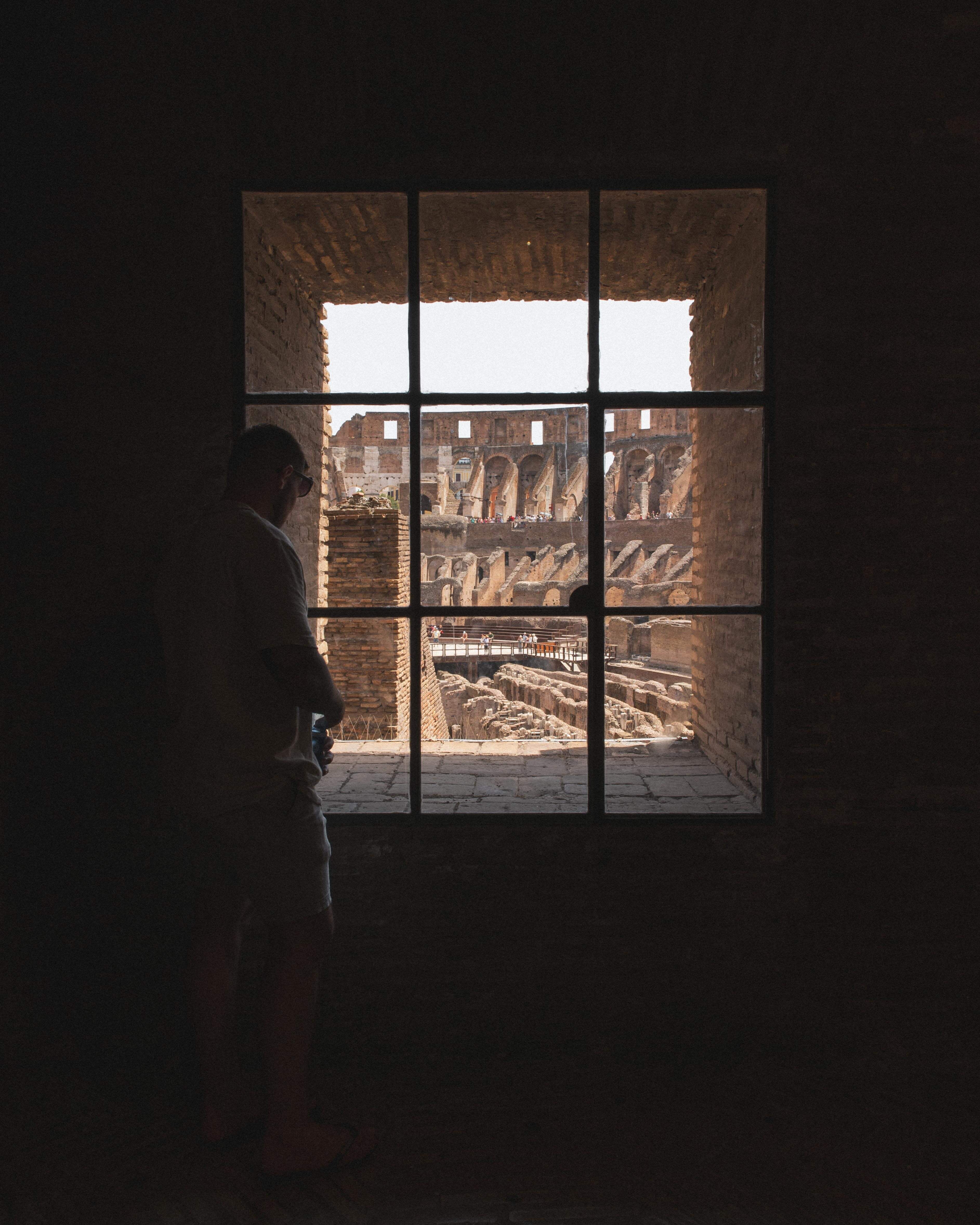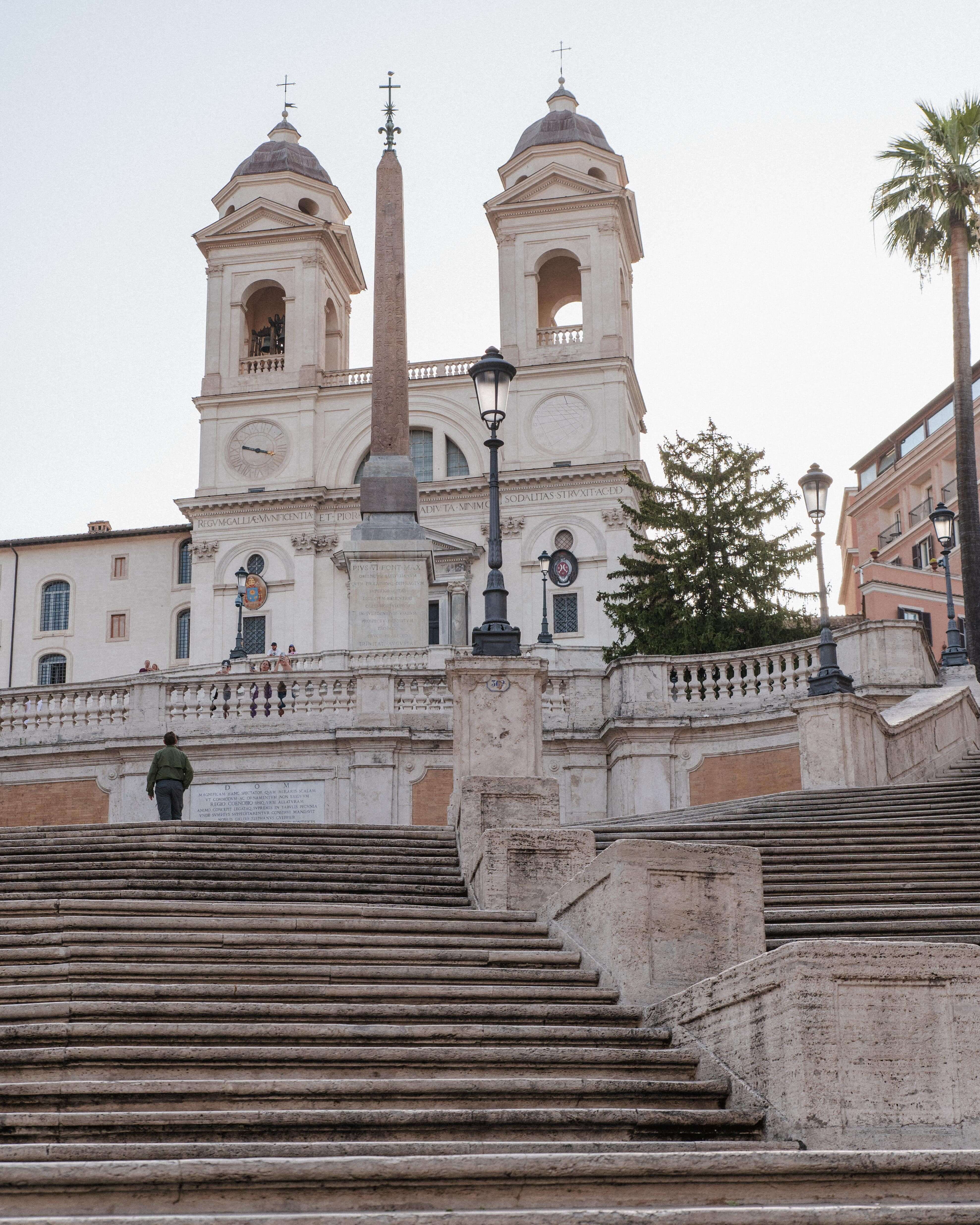Rome is one of the most historic and breathtaking places in the world and a trip here belongs on everyone’s bucket list. Whether you’re interested in history, art, food, or simply taking in the atmosphere, I believe Rome has something for everyone. I didn’t expect to love Rome as much as I did, and despite being dirty and a little smelly, this city has a unique charm. Being able to wander around and see the ancient ruins in person felt almost surreal.
We only spent two full days in Rome and though incredibly busy, managed to see all of the sites in this guide. I would however recommend an extra day so you can take your time and enjoy the sites, without having to rush. Continue reading for my ultimate guide on how to spend three days in Rome.
How to get there
Rome is easily accessible, with numerous airlines offering daily flights to and from Fiumicino Airport. If, like us, you are travelling from Australia, you can fly directly from Perth to Rome with Qantas.
For those already in Europe, Rome can also be reached by train. Most lines run to Roma Termini, which is the city’s central train station.
To find the best travel route for you, check out Omio for convenient options and deals on trains, buses, and flights.
How to get around
Walk: Rome is a very walkable city, with many attractions within walking distance of each other, especially in the historic centre.
Taxi / Uber: Though expensive, we found this to be the most convenient option
Public Transport: Rome’s public transportation options include buses, trams, and the Metro. There are several different ticket options depending on how long you are staying. You can find more information on this here
Driving: An option, however not one I would recommend. The traffic here is chaotic and parking is quite limited.
Where to stay
We stayed at the Royal House Hotel. In my opinion, this one belongs on the ‘must stay’ list for the view alone. We spent every night here, lying in bed staring out at the Colosseum.


What to do
Day One: Explore Ancient Rome
First on the agenda is the Colosseum. A trip to Rome wouldn’t be complete without visiting one of the most famous monuments in the world. This iconic landmark sits right in the heart of the city and despite its age, still holds the title of the world’s largest standing amphitheatre.
I highly recommend getting up early and spending the morning walking around the Colosseum. Rome is like a giant outdoor museum, and experiencing it without the usual crowds is truly magical.
While I’m not usually one for tours and prefer to explore at my own pace, I do recommend booking a guided tour of the Colosseum. Not only does give you priority access (trust me, once you see the crowds you’ll be thankful for this), but you will also get to learn about the incredible history of ancient Rome. Our tickets included access to the Colosseum arena, as well as entry to the Roman Forum and Palatine Hill.



Next, explore the nearby Roman Forum and Palatine Hill. These historic sites are an incredible part of the city’s ancient heritage.
The Roman Forum is an archaeological site filled with the ruins of ancient temples and buildings that once stood as the centre of political, religious, and social life in the ancient world.
Located above the Forum is Palatine Hill, the most famous of Rome’s seven hills, which offers stunning panoramic views of ancient Rome. Here you will find the ruins of ancient palaces that once homed emperors.



In the evening, treat yourself to a scoop of creamy gelato from one of the nearby gelaterias and savour it while spending more time gazing at the Colosseum. Watching the sunset here is a magical experience. Head to the walkway along Via Nicola Salvi, where you will find many great photo spots that overlook the Colosseum.
After a huge day of walking, so instead opted to enjoy the view from our hotel room.

Day Two: Iconic Sightseeing and Hidden Gems
Start your day at the most famous fountain in the world, Trevi Fountain. Another iconic landmark, the Trevi Fountain is one of the oldest water sources that supplied water to ancient Rome. Legend has it that tossing a coin with your right hand, over your left shoulder ensures that you will return to Rome someday.
The Trevi Fountain is incredibly popular, I recommend getting here as early as possible. We arrived at 5 am, just before sunrise and there were already at least 20 other people there. By the time we left at 6.30 am this number had tripled.
Note: The fountain undergoes regular cleaning between the hours of 6 am – 10 am on Monday, Wednesday, and Friday. During this time the fountain is emptied and barriers are erected, restricting access to the fountain.


From Trevi Fountain, the Pantheon is approximately 10-15 minutes walk. This remarkable temple is famous for being the most preserved monument of ancient Rome. You can buy Tickets at the entrance, however as with all Romes’s famous landmarks, I’d recommend buying these in advance.

A 15-20 minute walk from the Pantheon will take you to The Spanish Steps. This beautiful white marble staircase, built in 1723, connects Piazza di Spagna with the Trinita dei Monti Church.
Spend the rest of your morning exploring the charming streets surrounding the steps. This area boasts high-end boutiques and stunning architecture.


In the afternoon, seek out the Secret Keyhole on Aventine Hill. Peeking through the Knights of Malta Keyhole, you will see a unique view across three countries: the sovereign territory owned by the knights, Italy, and in the distance the Vatican with St. Peter’s Basilica, perfectly framed by a manicured garden.
From there, make your way to Giardino degli Aranci. Spend some time wandering through the historic church, Basilica of Saint Sabina before making your way to the beautiful Orange Garden. Here you will find a viewing platform that offers panoramic views of the Eternal City, including the iconic dome of St. Peter’s Basilica. This is the perfect spot to watch the sunset.



Day Three: Vatican City
Today you are going to spend the morning in another country. Established as an independent entity in 1929, Vatican City holds the distinction of being the world’s smallest country. Vatican City is the centre of the Roman Catholic Church and is home to iconic landmarks such as St. Peter’s Basilica and the Sistine Chapel.
A visit to Vatican City wouldn’t be complete without visiting the Vatican Museum and Sistine Chapel. Here you will find Michelangelo’s masterpiece ‘Creation of Adam’ on the ceiling, as well as many other remarkable collections of ancient sculptures and paintings. Once you arrive and collect your skip the line tickets from the collection desk, you are then free to explore at your leisure.
Note: Make sure you dress appropriately, both men and women need to cover their knees and upper arms.



Spend your final evening in Rome exploring the cobblestone streets and vibrant neighbourhood of Trastevere. This charming part of the city is known for its cozy restaurants, street art, and lively atmosphere. For a quintessential Roman experience, have dinner at a traditional Roman trattoria. After a satisfying dinner, don’t forget to indulge in one last gelato.


Travel tips
- Purchase skip the line tickets to avoid wasting time in long lines at the main attractions
- Try to visit popular tourist sites early, from 10am most landmarks are quite crowded
- Don’t waste money on buying bottled water, you can find drinkable water in fountains all over the city
- Keep an eye on your belongings in crowded areas, as pickpocketing can be a concern, especially at popular tourist sites and on public transport
- Restaurants in Rome typically don’t open until midday, therefore breakfast options can be limited. Instead, enjoy a traditional Italian breakfast of an espresso and a pastry








Leave a Reply